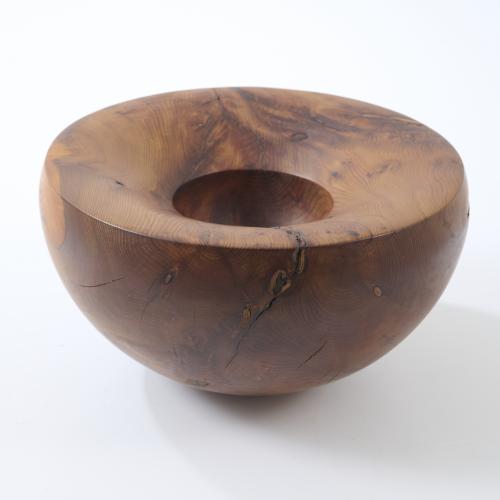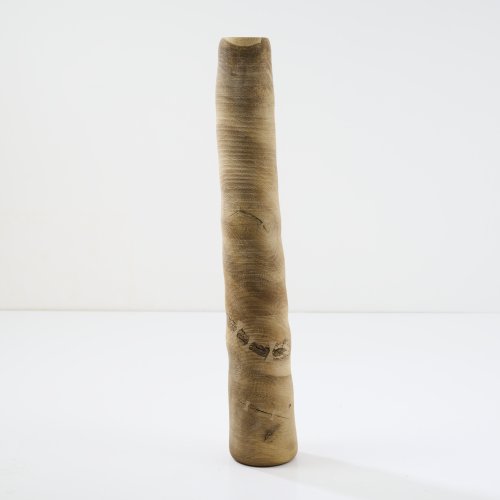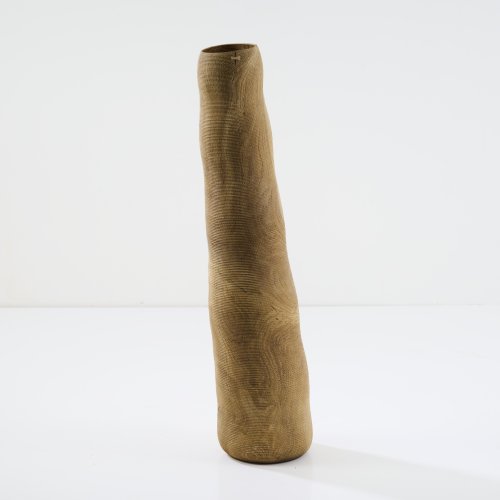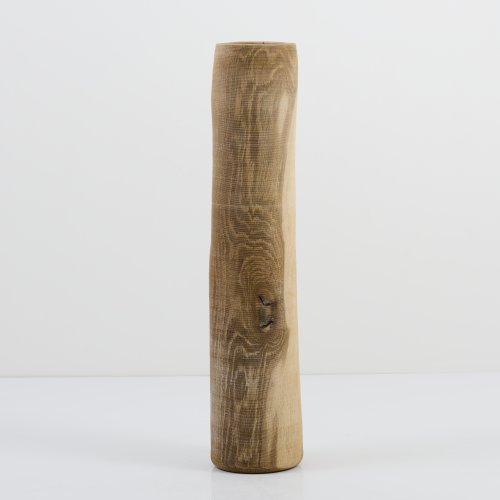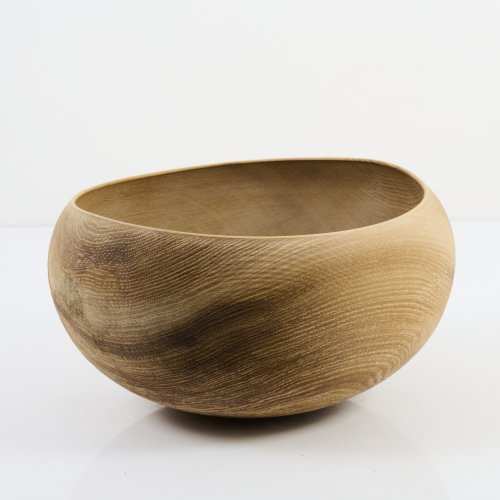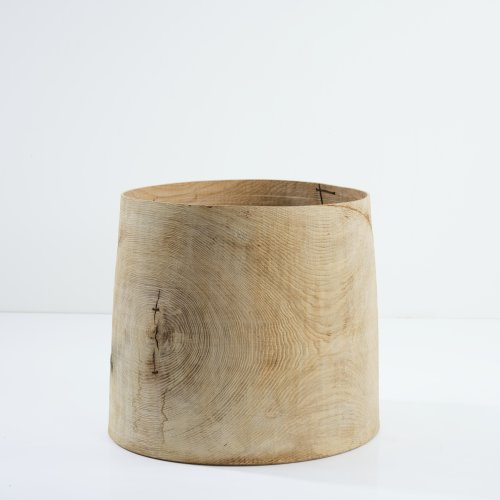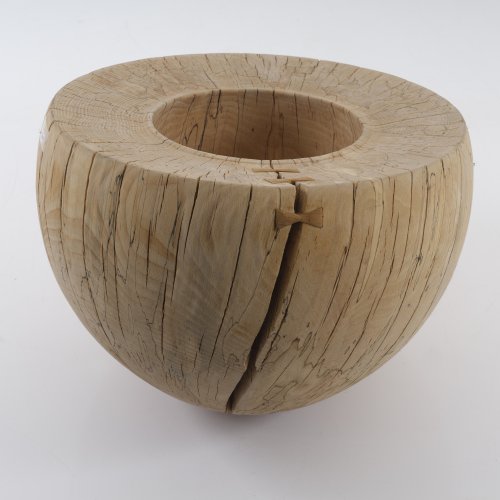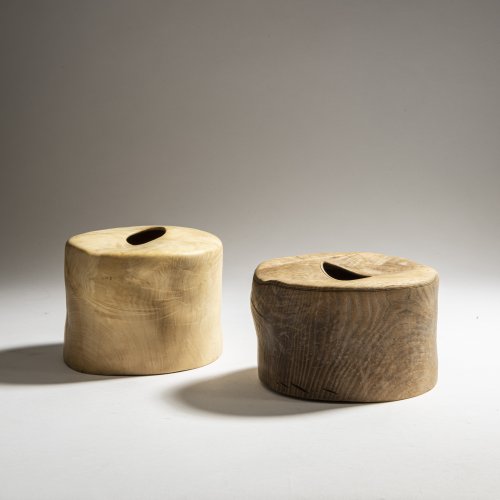Biography
Ernst Gamperl's works are not only evidence of extraordinary craftsmanship, but also of high artistic value. With his work he crosses the boundaries between applied and free art.
As a trained carpenter, Ernst Gamperl initially taught himself woodturning before completing an education as a master woodturner. The fact that he began as an autodidact is certainly one reason for his free approach to wood.
It is immediately apparent from Ernst Gamperl's approach to the material that he works in conscious harmony with it. For instance, he only uses trunks that had to be felled or that broke all by themselves. The final form of his works also visualizes his sensitive approach to the material. The artist does not try to hide the aesthetics and natural properties of the wood. What makes his works so special is the emphasized disclosure of growth irregularities, knotholes, cracks and fractures and their integration into the artwork.
Ernst Gamperl has been working exclusively with wet wood for decades. "Fresh wood," Gamperl says, "shrinks and [...]deforms [itself], and I began to consciously incorporate these developments into the design." Cracks are sometimes stabilized with small wooden Butterfly inlays or wire ropes, emphasizing rather than hiding them. In his œuvre, Ernst Gamperl exposes the infinite possibilities of woodworking, from thin-walled, feather-light works to robust, heavy forms, illustrating the changeability and beauty of the material.
Ernst Gamperl has achieved international prominence as one of a few German woodturners, winning numerous awards and being represented in collections worldwide, including the Victoria and Albert Museum, London, the Amorepacific Museum of Art, Seoul, and the Neue Sammlung, Munich.
If you would like to sell objects by Ernst Gamperl in one of our auctions, our experts are at your disposal.
